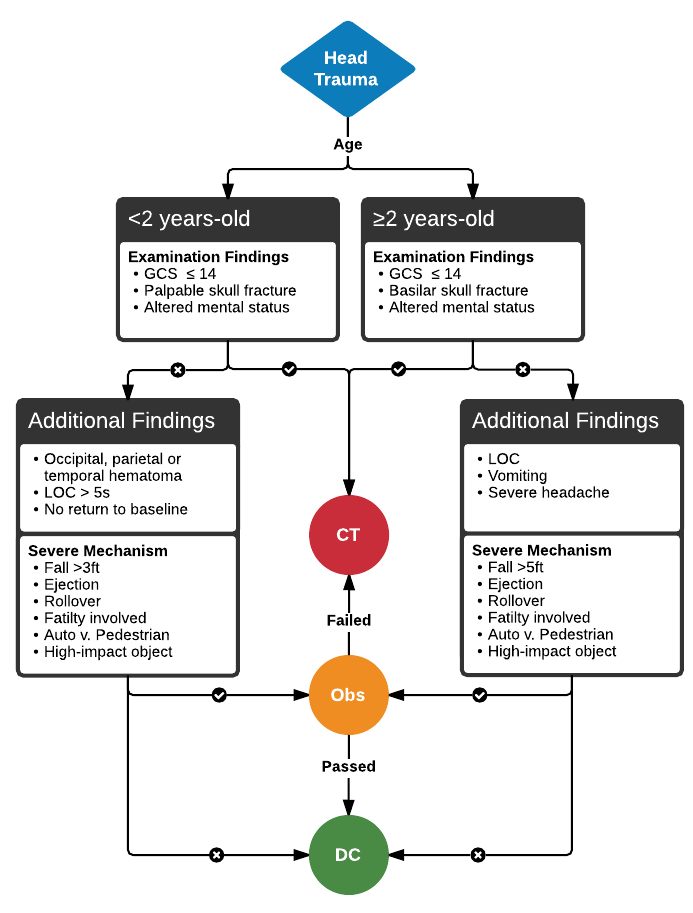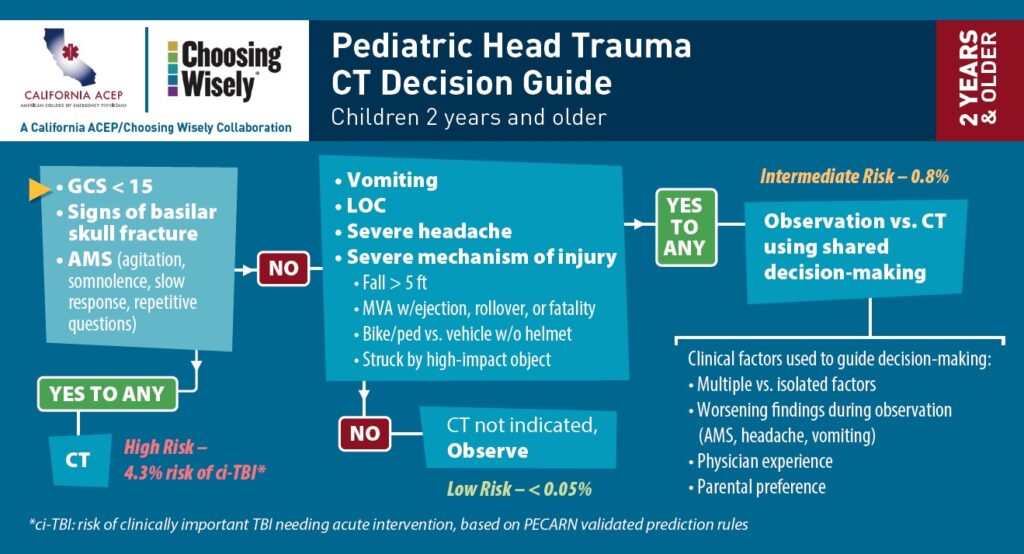Today, calculators make many things easier. No more hours of torture to check that the calculation is correct. Nowadays, we enter everything we need for the count into the calculator, getting the correct answer. If you want to calculate the PECARN very quickly, our calculator will help you with that. Learn about the definition of PECARN, what does PECARN stand for and how to calculate PECARN.
Take a look other related calculators, such as:
- Mentzer index calculator
- Glycemic load calculator
- Micronutrient calculator
- Venous blood gas interpretation calculator
What is PECARN – Definition of Pediatric Head Injury/Trauma Algorithm
Pecarn is a pediatric algorithm for head injuries or trauma. It is a severe injury to at least two body regions simultaneously. In this case, these are two regions located on or inside the head. In the brain, where one or more injuries endanger the injured person’s life. Due to the injuries themselves and insufficient responses of the organism to trauma and the applied therapies, the treatment of this disease is one of the most complex in modern medicine.
Algorithms are of great help in the modern approach to treating head injuries or trauma, the application of which achieves better results while reducing omissions and errors and raising the quality of health care to the highest level.
What are the PECARN criteria for a head injury?
The Pecarn criterion has several characteristics to determine whether it is a major and serious injury or a minor head injury. We will start from the symptoms themselves, which indicate what kind of injury it is. Whether it is just the head or several parts of the same.
The first symptoms that occur, especially in children, are vomiting, drowsiness, pale skin color and the like. If these basic symptoms last longer than 6 hours, the doctor should perform further tests because it could worsen the patient, and there is a possibility that the injury has been transmitted to the brain. Therefore, these are the first criteria for head injury or trauma.
After a head injury, a concussion occurs. It is a temporary loss of consciousness. The severity of the concussion must be determined immediately, regardless of whether it lasted one minute or less. Often, the child cannot remember what happened before or after the concussion in these situations.
These criteria are followed by slightly more serious head injury or trauma situations. These are injuries that can damage brain tissue, blood vessels in or around the brain, which can cause internal bleeding or swell inside the brain.
Brain injury usually occurs without a skull fracture and a skull fracture without a brain injury. Such fractures often cannot be seen on X-rays or computed tomography (CT).
Symptoms
Symptoms that indicate this type of fracture are:
- Cerebrospinal fluid — (the clear fluid that coats the brain) —drains from the nose and ears
- Blood accumulates behind the eardrum or bleeds from the ear if the eardrum is punctured
Symptoms of severe brain injury:
- Loss of consciousness
- Impossibility of speech or sight
- Severe headache
- Inability to recognize people and the environment
- Leakage of clear fluid from the nose or mouth
- Inability to move or feel any part of the body
When to use PECARN (and when not to)
When assessing the condition of a child who has had a head injury, the doctor must take into account the route by which the injury was inflicted and the consequent symptoms and determine them based on the examination. Particular attention should be paid to determining the degree of consciousness, the ability to sense and move parts of the body, any abnormal movement, reflexes, eyes and ears, pulse, blood pressure and breathing. It is important to determine both the size of the pupils and their reaction to light.
The back of the eye is examined with an ophthalmoscope that allows us to determine if the pressure in the brain is elevated. Bleeding in the back of the eye (retinal bleeding or retinal bleeding) is most common in infants who have been exposed to cherries (child cherry syndrome). A severe brain injury requires computed tomography (CT) of the brain. In the case of an open skull fracture without brain injury, only an X-ray can be performed.
Drowsy children should be admitted to the hospital, as well as those who are unconscious even for a short time, who have any abnormality of sensation or muscle strength, or who are at high risk for worsening symptoms. Children who have had a skull fracture but without because brain injuries can be life-threatening. Even people with seemingly minor injuries, with no noticeable signs or complaints, should be closely monitored

The Glasgow Children’s Coma Scale is used in young children. In addition, the widely used PECARN head injury/head trauma algorithm helps physicians weigh the risks and benefits of recording in a clinical setting with multiple factors about the patient – including injury mechanism/location, patient age, and GCS score.
How to correctly use the PECARN calculator?
To use the PECARN calculator correctly, it is necessary to establish or answer three questions:
- Observing the patient establish a physical skull injury
- Take into account the detailed history of the injury (loss of consciousness, duration of consciousness, etc.)
- Ask parents for their opinion on their child’s current behaviour
PECARN score algorithm

Abbreviations used in the PECARN tool in pediatrics:
AMS- altered mental state
TBI- severe traumatic brain injury
GCS – Glasgow Coma Scale
CT – Computed tomography
Age two years and older: What PECARN says

The criteria in children > 2 years of age are GCS 14 or other signs of mental status change, signs of basilar skull
fracture, loss of consciousness, vomiting, severe mechanism or severe headache.
